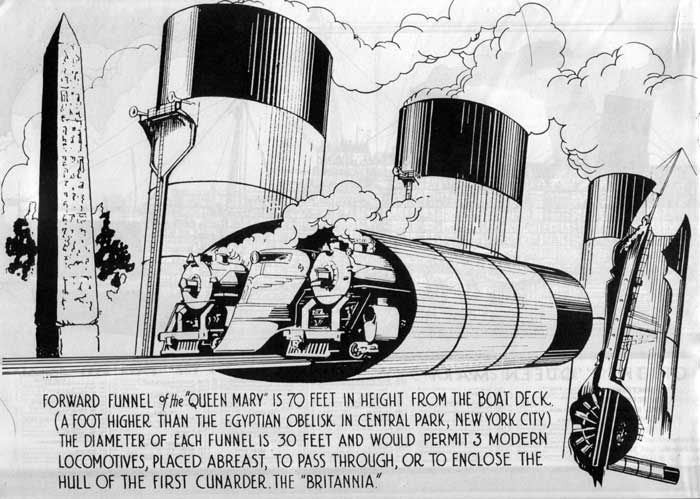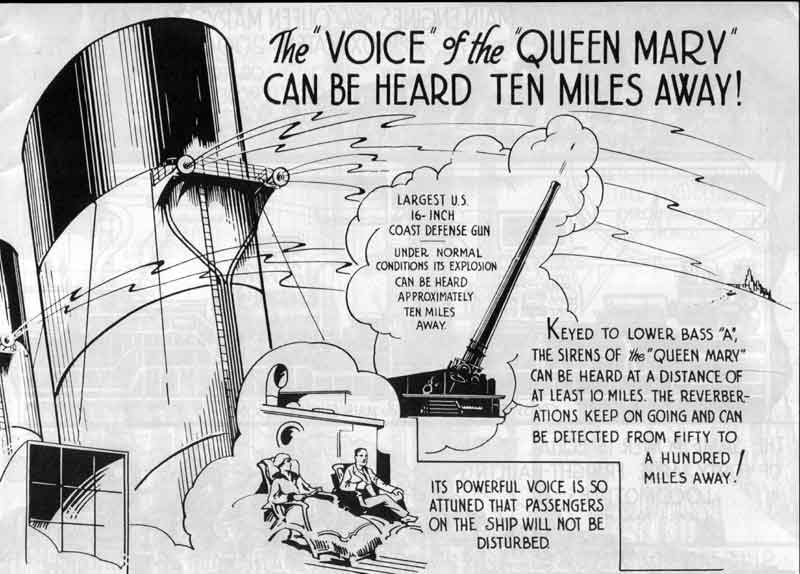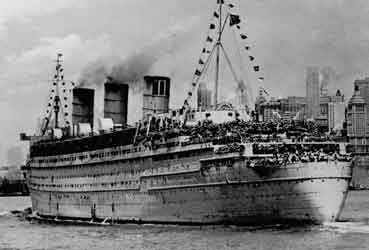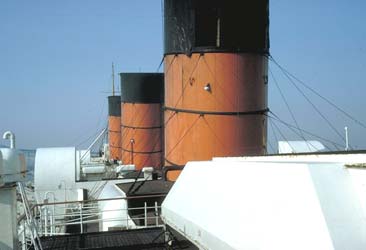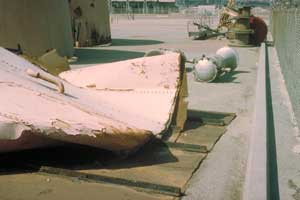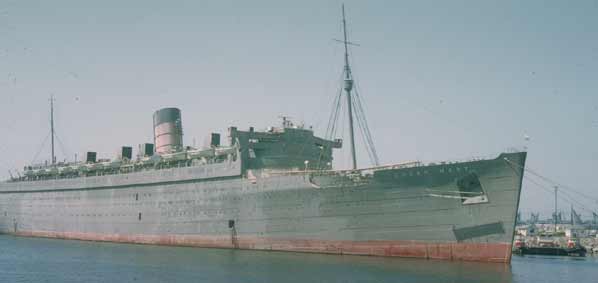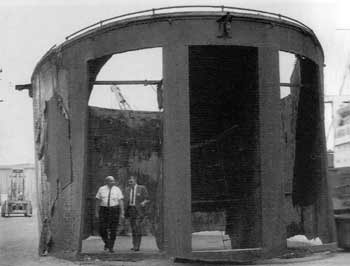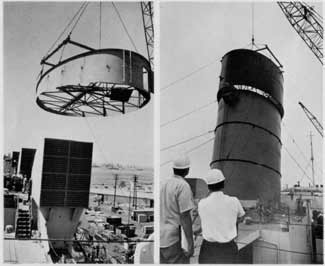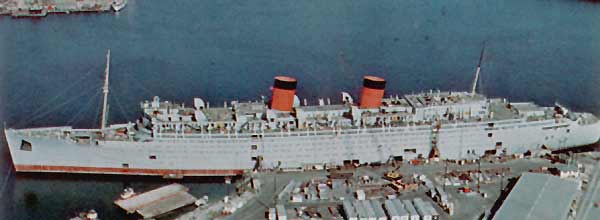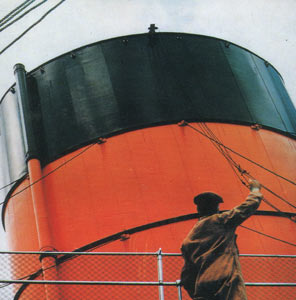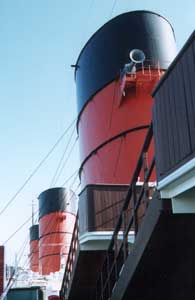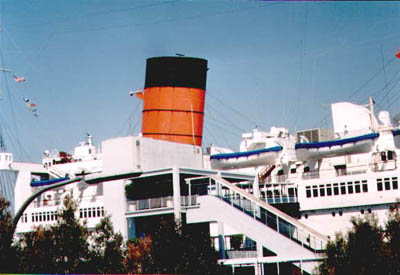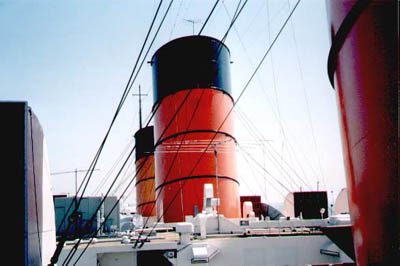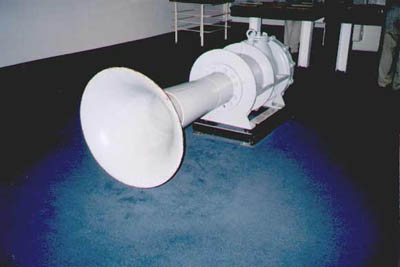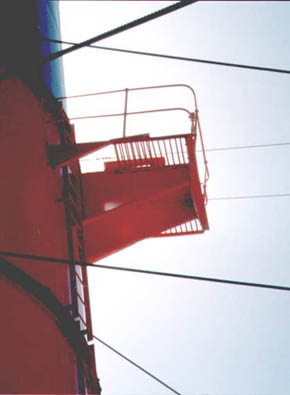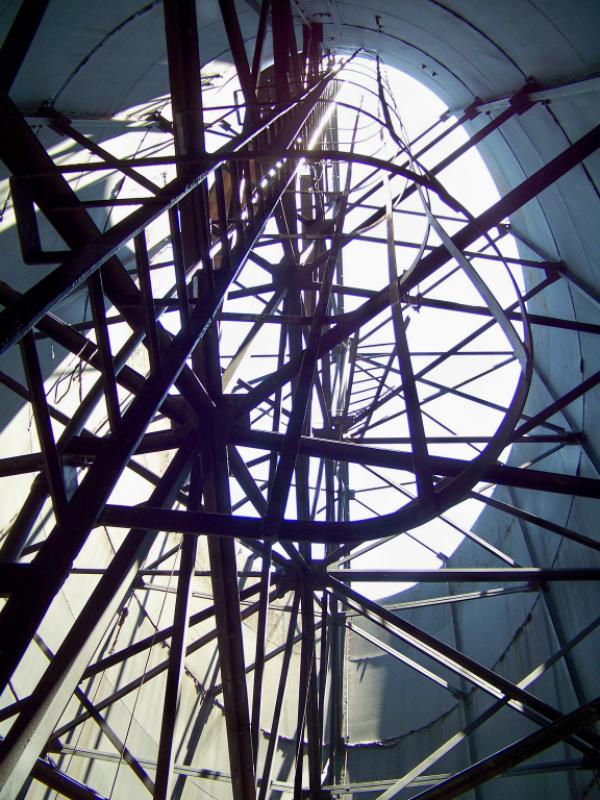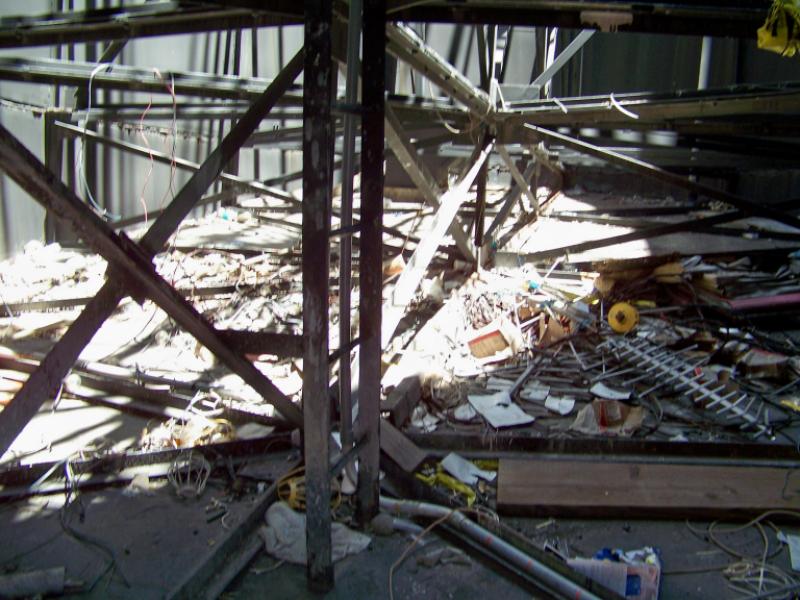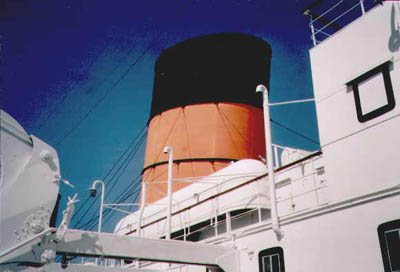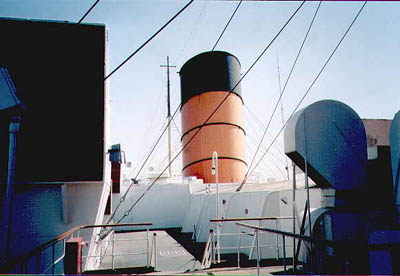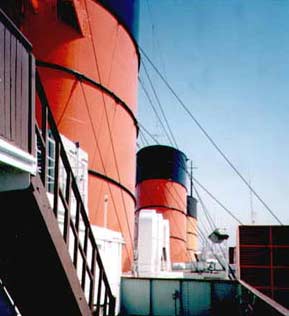The Funnels and Whistles.The Queen Mary as built had three raked funnels. The forward funnel was 70ft 6 inches high from sports deck while the middle funnel was 67 ft. 6 inches and the aft funnel 62 ft. 3 inches All three had a diameter of 30ft, and were 23 ft. 4 in. wide, permitting, as Cunard's marketing materials noted (below) "3 modern locomotives, placed abreast, to pass through, or to enclose the hull of the first Cunarder, the Britannia." The whistles could be heard ten miles away. Click here to listen to an early recording of the sound from the whistles.
The angle of rake selected was based on extensive wind tunnel testing of models. The aim was to minimize the problem of soot descending on passengers using the upper decks. The last funnel was a partial also used for deck chair storage. History of Use1936-1939 – No change from the above. 1940- 1946 – The Queen Mary was used as a troop transport during World War II.
Left - The Queen Mary painted gray during World War II. Note the vents in the rear of the aftermost funnel. These were exhausts for the kitchens and engine rooms, and were better disguised when the ship was painted with black tops to her funnels (see later photo on right). This feature was not reproduced when the funnels were replaced in 1968 with replicas (see below). 1947-1967 – In the postwar refit of 1947 the funnels were repainted in their regular colors. 1968 to present – In the Long Beach conversion the funnels were completely removed to gut the power plant. It was necessary to remove the funnels to provide access to the machinery below them, as this had to be lifted by crane up the smoke uptakes to be removed and scrapped. Some sections of funnel collapsed on the wharf, supposedly from rust, but probably also from loss of support.
Left - a funnel section lies
crumpled on the wharf. A tyfon whistle is in the background.
Right - the forward funnel is cut into pieces with a torch ready for
removal.
Removed original funnel sections lie on the wharf, discarded.
Queen Mary with only her center funnel remaining during the conversion period in 1968.
Above - the scale of the funnels is seen by the removed top section of the after funnel. The kitchen and engine room vents described earlier in this article are enormous. Right - new sections of funnel are lifted into place in 1968. The funnels were all replaced with aluminum replicas - somewhat shorter than the original ones. The replicas are not riveted and are smoother in outer appearance therefore.
The Queen Mary with two of her replica funnels in place.
Funnels in 1936 when new (left), looking faded just before dismantling (center), and in 1996 (right) with redder paint which was replaced soon afterwards with more a correct shade of orange. The tie-ropes at this time were not the main structure of the funnels - they are now supported from the interior. Oddly the funnels weren’t used to house critical mechanical functions needed by the new setting – the air conditioning equipment was instead strewn all over the upper decks and the electrical closet for which the kennels were destroyed could have been placed in the interior space of the new funnels. Of the three Tyfon whistles, only the two on the forward funnel were replaced after the funnels were changed. The third, from the center funnel, lay in the museum in the aft section of the ship until 2002 when it was removed for transportation to Florida, and was shipped from there to England. It will be repaired and used on the new Queen Mary 2. The whistle will be on long-term loan from the City of Long Beach. An article about this loan from the Miami Herald is here. Of the two remaining on the forward funnel, only one is operational today. Driven by compressed air, not steam, it uses a diaphragm from the third whistle, that being the last serviceable part remaining between the three whistles. When the ship was operated by Disney in the late 80's and early 90's, the funnels were painted red and black instead of orange and black. The reason for this is unclear, but the red appeared to be the same paint used on the hull bottom, and some people thought that the operators at the time believed most people expected a liner to have red funnels. The funnels were returned to their original orange by the current operator in the mid 90's. The enormous job of painting them is undertaken every few years as the color fades over time; especially in the California sunshine. Whilst in service, the funnels were painted every year. Restoration PotentialIn our alternative vision the first funnel and surround houses public toilets, two service elevators, a service pantry and possibly an uptake for a shipboard power plant in boiler room #1. Funnel # 2 houses the electrical closet removed from the kennels - allowing it to be restored. Funnel # 3 serves as a deck chair storage area. All three funnels would also conceal the miscellaneous air conditioning equipment placed on the upper decks since the conversion. The Funnels pictured in March 2002 - Most photos by W.E.Cwiklo.The Forward Funnel
The Forward funnel shown from a distance and a close-up of the Whistle Platform.
The Center Funnel
The Aft Funnel
|
|||||||||||||||||||||
